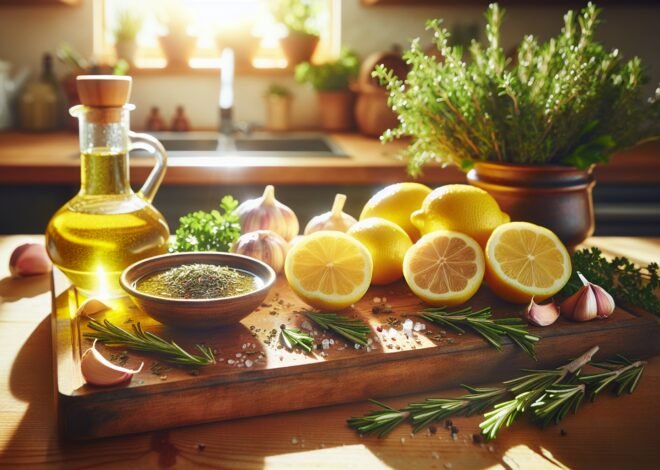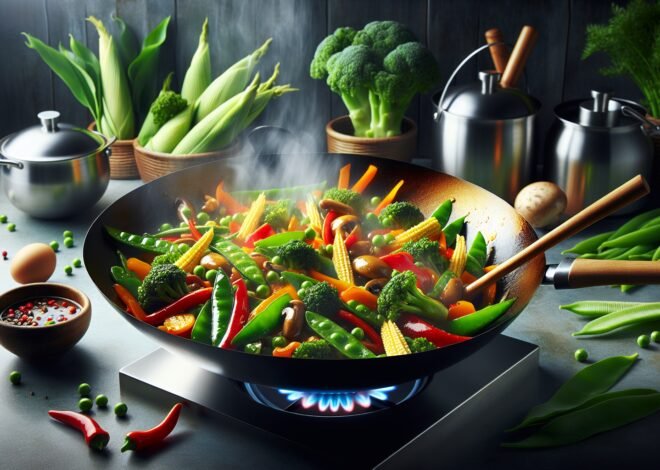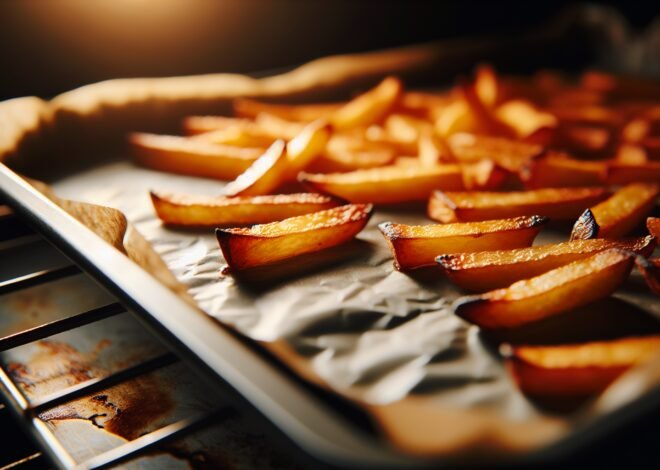
How to Make a Spicy Sriracha Sauce at Home
Make sriracha sauce at home and savor the delight of crafting your own spicy condiment. Known for its bold heat and tangy kick, sriracha has become a staple in kitchens worldwide. This guide will detail the process, offering step-by-step instructions and tips for achieving that perfect blend of flavors. By making it yourself, you can customize the spice level and ingredients to suit your palate. Whether you’re a spice aficionado or looking to experiment in the kitchen, this homemade sriracha recipe promises to add a fiery twist to your dishes.
What is Sriracha Sauce and Its Origin
Sriracha sauce has become a staple in kitchens worldwide, renowned for its spicy kick and unique flavor profile. To understand its impact, it’s essential to delve into its origins and what makes it so special. This section explores the journey of Sriracha from a humble condiment to a global sensation, its foundational ingredients, and the unique taste that captivates the palate.
History and Popularity of Sriracha Sauce
Sriracha sauce traces its roots back to Thailand in the coastal city of Si Racha, where it was first concocted by a local woman named Thanom Chakkapak. In the 1930s, she developed this sauce as a way to bring heat and depth to her meals. Initially, it was a homemade recipe shared among friends and family, but its popularity quickly spread beyond the city limits.
In the 1980s, David Tran, a Vietnamese immigrant to the United States, introduced Sriracha to the western world. He founded Huy Fong Foods and began producing the now-iconic version of Sriracha, often recognized by its green cap and rooster logo. Unlike the original Thai version, Tran’s Sriracha was a thicker, spicier variant that quickly gained a cult following. The sauce’s popularity skyrocketed, partly due to its versatility and the increasing trend of spice-loving cuisine in American households. Today, Sriracha is not just a sauce but a cultural phenomenon, embraced by chefs and home cooks alike for its ability to elevate dishes with a unique spicy tang.
Main Ingredients in Traditional Sriracha
The magic of Sriracha lies in its simple yet powerful ingredients. Traditional Sriracha is made from red chili peppers, garlic, sugar, salt, and vinegar. These components might seem basic, but their combination creates a sauce that is both spicy and sweet, with a hint of tanginess.
- Red Chili Peppers: The primary ingredient, providing the heat. Different types of chilies can be used, but red jalapeños are the most common.
- Garlic: Adds a rich, aromatic undertone that complements the heat of the chilies.
- Vinegar: Contributes to the sauce’s tanginess, balancing the sweetness and heat.
- Sugar and Salt: These ingredients enhance the overall flavor, with sugar adding sweetness to counterbalance the spiciness.
The balance of these ingredients is what sets Sriracha apart from other hot sauces, offering depth and complexity rather than just heat.
Unique Characteristics of Sriracha Flavor
Sriracha stands out due to its distinctive flavor profile, which is both complex and approachable. The combination of spicy, sweet, and tangy elements creates a multidimensional taste experience. Unlike some hot sauces that focus solely on heat, Sriracha offers a symphony of flavors that can enhance a variety of dishes without overwhelming them.
The heat from the chili peppers is immediate yet not overpowering, allowing other flavors to shine. The garlic and vinegar add layers of depth, making the sauce versatile enough to complement everything from Asian dishes to classic American fare. This unique balance is why Sriracha can be found in everything from soups to sandwiches, offering a kick that elevates rather than detracts from the main ingredients.
Homemade Sriracha Sauce Recipe for Beginners
Making Sriracha at home is not only rewarding but allows for personalization in flavor and spice level. This section guides beginners through the process of creating their own Sriracha, from gathering essential ingredients to perfecting the spice. With a bit of patience and creativity, anyone can craft a sauce that’s tailored to their taste buds.
Essential Ingredients for Homemade Sriracha
For those eager to create Sriracha at home, understanding the core ingredients is crucial. Homemade Sriracha requires fresh, quality ingredients to achieve that authentic flavor. Here’s what you’ll need:
- Fresh Red Chili Peppers: Choose vibrant, firm peppers for the best flavor. Red jalapeños or Fresno chilies are popular choices.
- Garlic Cloves: Fresh garlic is essential for that aromatic punch.
- White Vinegar: Provides the necessary acidity to balance flavors.
- Granulated Sugar: Sweetens the sauce, counteracting the heat.
- Salt: Enhances all the flavors, bringing them together.
Optional additions include fish sauce for an umami hit or fruit like pineapple for a sweet twist. These variations can add a personalized touch to your homemade Sriracha.
Step-by-Step Guide to Making Sriracha at Home
Creating Sriracha at home is a straightforward process that involves fermenting the ingredients to develop depth and complexity. Follow these steps for a successful batch:
- Prepare the Chilies: Slice the peppers and remove seeds to control the heat level. Wear gloves to avoid irritation.
- Blend Ingredients: Combine chilies, garlic, sugar, salt, and a bit of vinegar in a blender. Blend until smooth.
- Ferment the Mixture: Pour the mixture into a glass jar, cover with a cloth, and let it ferment at room temperature for 5-7 days. Stir daily to release built-up gases.
- Cook the Sauce: After fermentation, transfer the mixture to a saucepan, add the remaining vinegar, and simmer for 5-10 minutes.
- Strain and Bottle: Strain the sauce to remove solids, ensuring a smooth texture. Pour into sterilized bottles or jars.
This simple process results in a homemade Sriracha that’s fresh and bursting with flavor, ready to be enjoyed in countless dishes.
Tips for Adjusting Spice Levels in Sriracha
One of the benefits of making Sriracha at home is controlling the heat level. Here are some tips to customize the spice:
- Choosing Peppers: Use milder peppers like red bell peppers for a less spicy sauce or hotter ones like habaneros for extra heat.
- Seed Removal: Removing seeds reduces the sauce’s spiciness, as seeds contain most of the heat.
- Fermentation Time: Shorter fermentation can result in a milder sauce, as fermentation intensifies flavors.
- Sweetness Balance: Adjusting sugar levels can also affect perceived spiciness. More sugar can temper the heat.
Experiment with these variables to create a Sriracha that suits your palate perfectly.
Storing and Using Your Homemade Sriracha Sauce
Proper storage is key to preserving the flavor and longevity of your homemade Sriracha. Once you have your sauce, the possibilities for its use are endless. This section covers the best practices for storing Sriracha, innovating its use in dishes, and the surprising health benefits it offers.
Best Practices for Storing Sriracha Sauce
To maintain the quality and flavor of your homemade Sriracha, proper storage is essential. Here are some guidelines:
- Sterile Containers: Always use sterilized jars or bottles to prevent contamination.
- Refrigeration: Store Sriracha in the refrigerator to extend its shelf life and keep it fresh.
- Seal Properly: Ensure lids are tightly sealed to maintain freshness and prevent spoilage.
- Use of Glass: Opt for glass containers as they do not interact with acidic sauces like plastic may.
When stored correctly, homemade Sriracha can last several months, retaining its vibrant taste.
Creative Ways to Use Sriracha in Dishes
Sriracha’s versatility makes it a star ingredient in various recipes. Here are some creative ways to incorporate it into your meals:
- Marinades: Use Sriracha in marinades for meats or tofu, adding a spicy kick.
- Dips: Mix with mayonnaise or yogurt for a spicy dip or spread.
- Soups: Add a dash to soups for an immediate heat boost.
- Stir-fries: Incorporate into stir-fry sauces for a spicy twist.
- Cocktails: Spice up a bloody mary with a splash of Sriracha.
These ideas highlight Sriracha’s ability to enhance traditional dishes with a modern, spicy flair.
Health Benefits of Consuming Sriracha Sauce
Beyond its bold flavor, Sriracha offers surprising health benefits. Here are a few:
- Boosts Metabolism: Capsaicin, found in chili peppers, is known to increase metabolic rate.
- Vitamin C: Red peppers are rich in vitamin C, boosting the immune system.
- Antioxidants: Garlic and chilies contain antioxidants that combat free radicals.
- Heart Health: Capsaicin may also help lower blood pressure and improve heart health.
Incorporating Sriracha into your diet not only enhances flavor but also contributes to a healthier lifestyle.
Conclusion
The process of making sriracha sauce involves combining red jalapeño peppers with vinegar, garlic, sugar, and salt. The mixture is then pureed into a smooth consistency. Once blended, the sauce is fermented for several days to develop its flavor. After fermentation, the sauce is strained to remove seeds and skins. The final product is bottled and ready for consumption.
FAQ
How long does homemade sriracha sauce last in the fridge?
Homemade sriracha sauce can last up to six months in the fridge if stored in an airtight container. Fermentation may enhance flavor over time, but always check for any signs of spoilage before use.
What are the main ingredients in authentic sriracha sauce?
The main ingredients in authentic sriracha sauce include red chili peppers, garlic, vinegar, sugar, and salt. These components blend to create the iconic spicy, tangy flavor.
How can I make my sriracha sauce spicier or milder?
Adjusting the spice level involves modifying the type of chili peppers used. For a spicier sauce, include hotter varieties like Thai or habanero peppers. For a milder version, use jalapeños or remove seeds and membranes from the chilies.
Can I use fresh or dried chilies for homemade sriracha sauce?
Both fresh and dried chilies can be used for making sriracha sauce. Fresh chilies offer a vibrant flavor, while dried chilies provide a deeper, more concentrated taste. Rehydrate dried chilies before blending for best results.
Are there any substitutes for vinegar in sriracha sauce?
Lemon or lime juice can serve as substitutes for vinegar in sriracha sauce, providing a similar acidity. Experiment with different acids to achieve your preferred taste.
What are the traditional uses for sriracha sauce in cooking?
Sriracha sauce is popularly used as a condiment, marinade, or dipping sauce. It enhances the flavor of dishes like noodles, stir-fries, soups, and grilled meats, offering a spicy kick.











